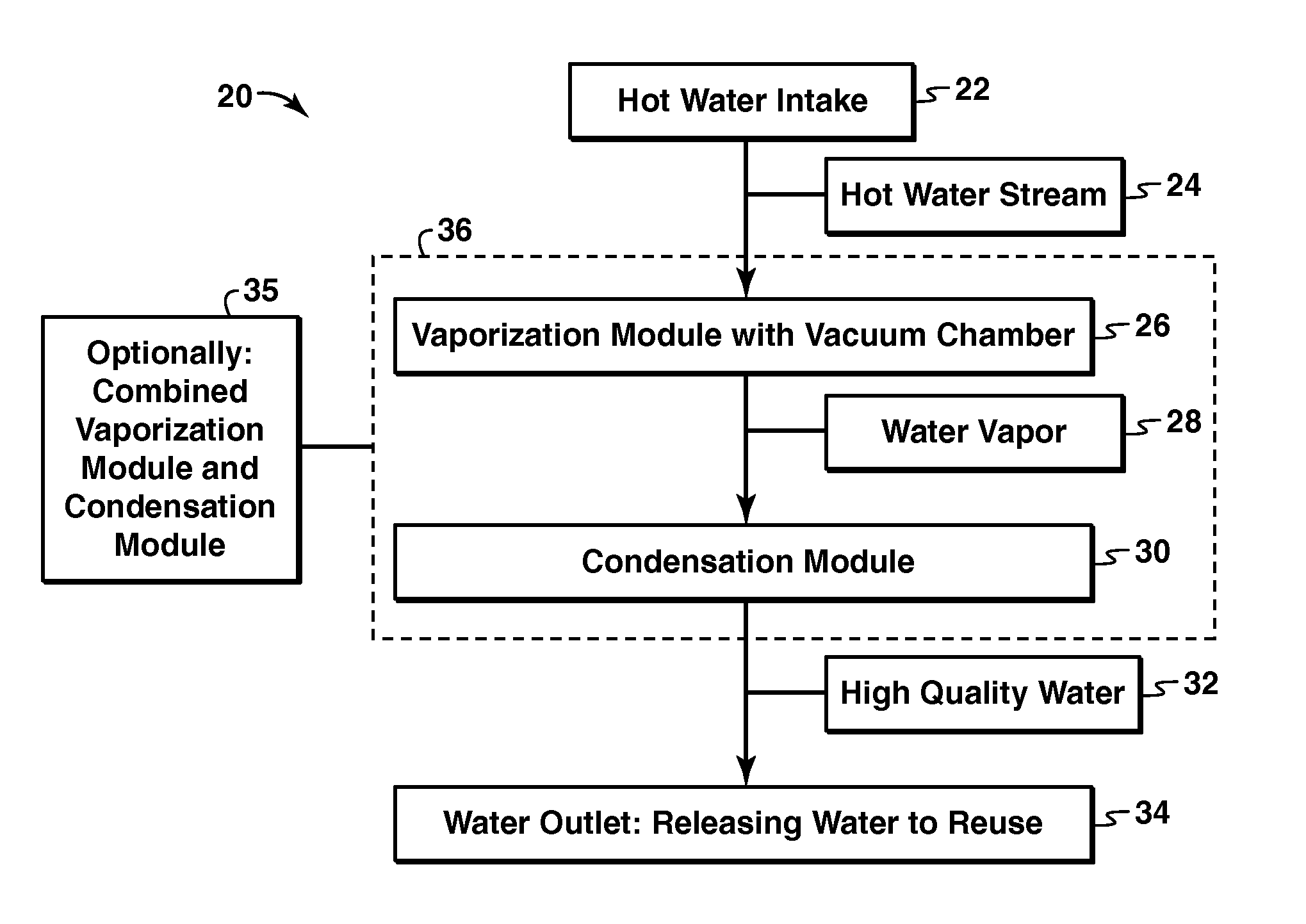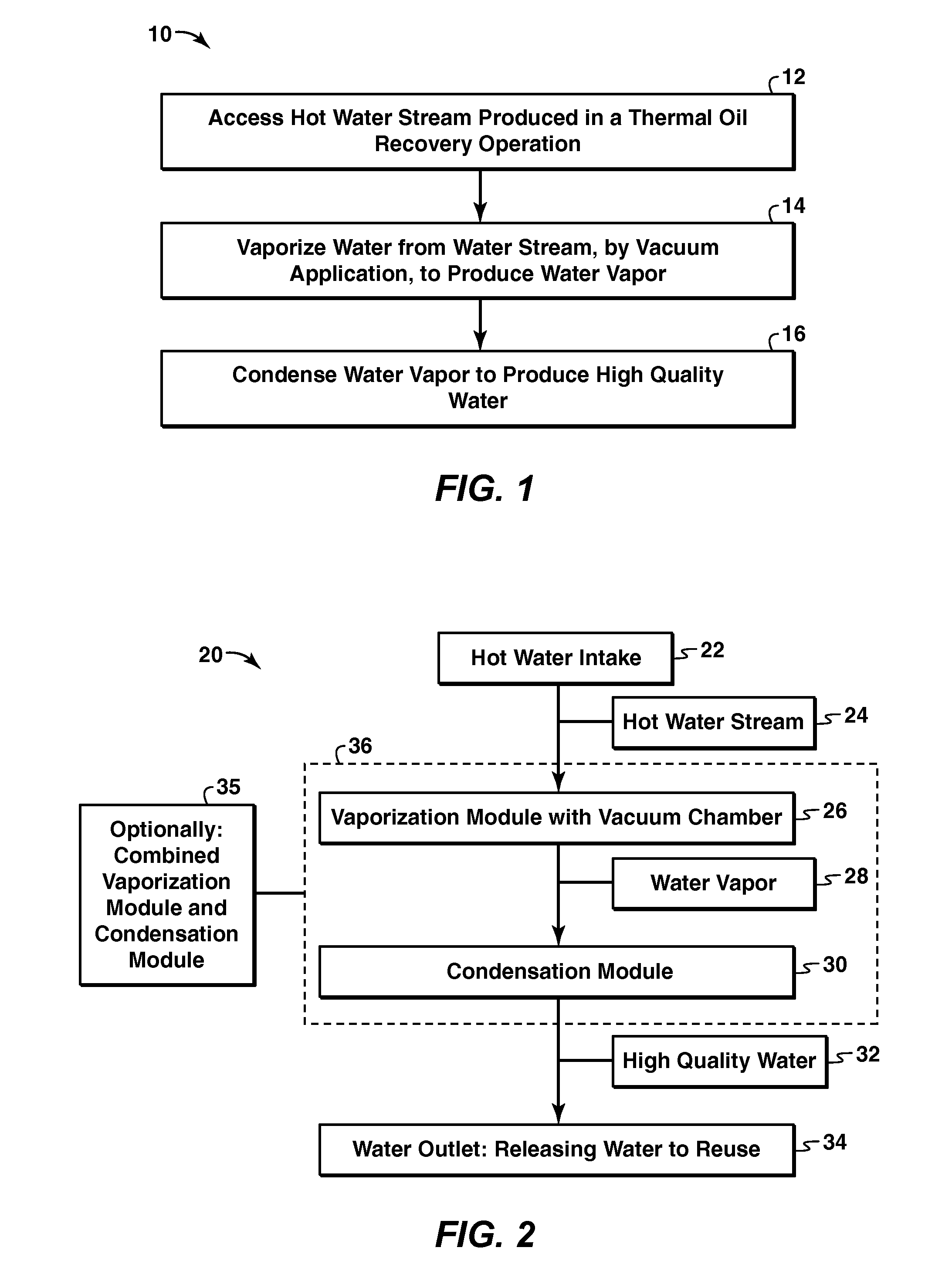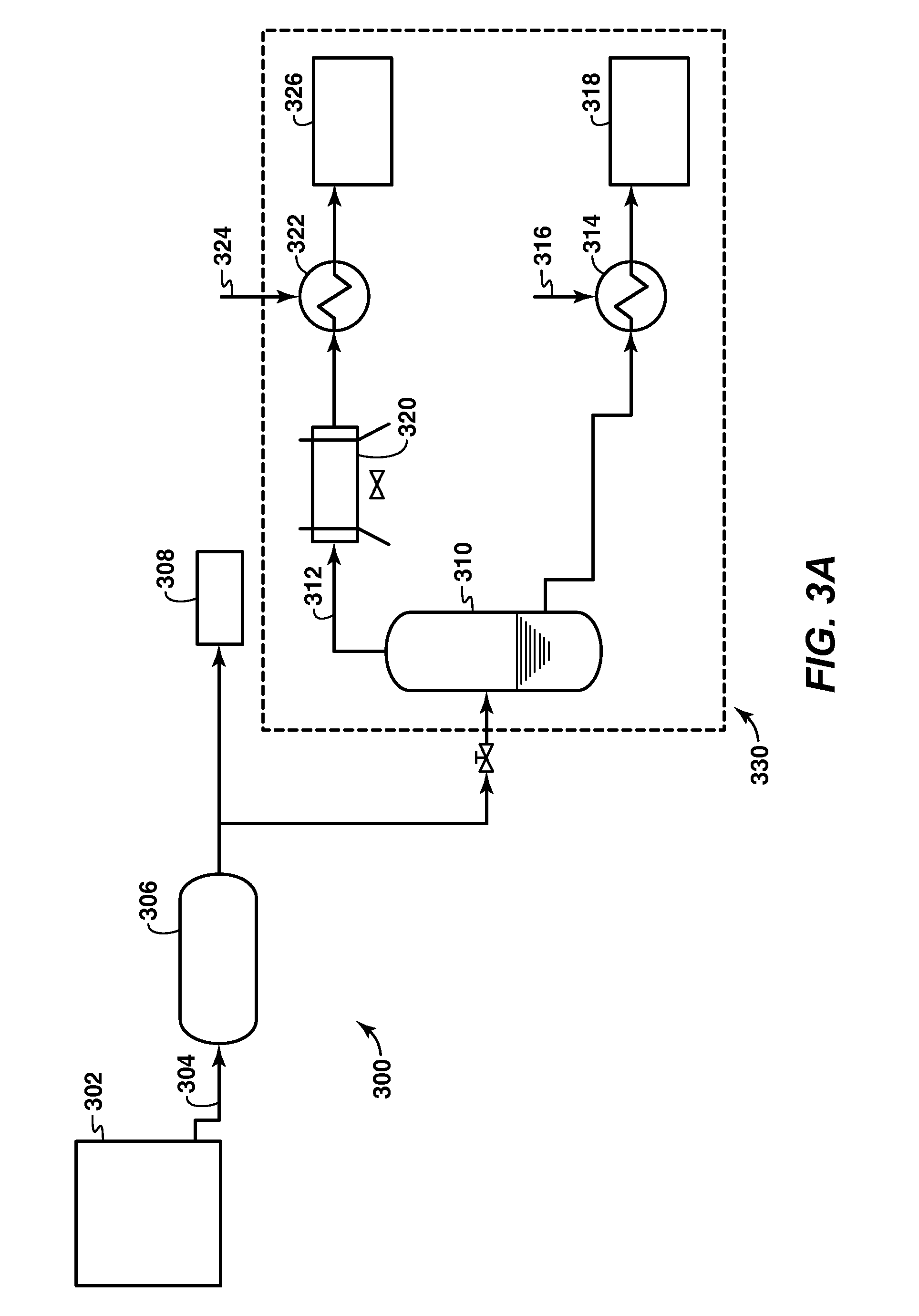Recovery of high water from produced water arising from a thermal hydrocarbon recovery operation using vaccum technologies
a technology of thermal hydrocarbon recovery and produced water, applied in vacuum distillation separation, separation process, vessel construction, etc., can solve the problems of large amount of waste heat released to the environment without further utilization, no effort currently being made to recover water or heat, and no immediate heat sink available for re-use, etc., to achieve high purity, facilitate water purification, and economic benefit
- Summary
- Abstract
- Description
- Claims
- Application Information
AI Technical Summary
Benefits of technology
Problems solved by technology
Method used
Image
Examples
example 1
[0058]Heat and water recovery from CSS or SAGD operation derived from secondary deoiling equipment.
[0059]FIG. 3A is a schematic illustration of an embodiment of a heat and water recovery system. The heat and water recovery system 300 involves water derived from a skim tank 302, considered “produced water”304, which is subsequently sent to secondary deoiling equipment 306 for additional oil removal. Such secondary deoiling equipment may comprise a gas floatation device, such as a tank. While some water is sent to lime softening 308, other proportions of water are forwarded to a vacuum vessel 310, under appropriate conditions, for example at 6 kPa, and approximately 35° C., which may be adjusted as required. A certain amount of water vapour, for example about 7.5% of the vessel inlet quantity, may be derived from the vacuum vessel vapour outlet 312, while the remaining water amount, approximately 92.5% for example, may have heat input through a glycol heater 314 into which hot glycol ...
example 2
[0064]Heat capture from Hot Lime Softener sludge, Ion Exchanger Regeneration or other waste streams.
[0065]Waste streams from water softening are usually present at or near 80° C. Products from waste streams can undergo vacuum treatment to recover water and provide a heat sink for the energy conventionally wasted in the form of hot glycol derived from thermal recovery operations.
[0066]Additional advantages may be realized because the quantity of water recycled back into the pond system is reduced. The pond system oxygenates the water, and this dissolved gas gives rise to corrosion problems in process equipment prior to the degassing stage.
[0067]FIG. 4 is a schematic representation of a further embodiment of the system described herein. The system 400 involves deriving a waste stream 402 for recovery, for example, from the sludge pond of the HLS process, from ion exchanger regeneration, or from another type of waste stream, and directing it to vacuum treatment 430, such as described i...
example 3
[0068]SAGD produced water treatment (optionally including TSRU tailings) by Multi-Effect Distillation (MED).
[0069]FIG. 5 illustrates an exemplary system in which the SAGD product is utilized to derive waste heat and re-use wastewater. In this example, the system 500 produces distilled water of adequate purity for boiler use, while warm water may be produced for use in bitumen extraction. SAGD production 502 which may have chemical separation aids added, is initially separated into oil and water streams using such a method as, but not excluded to Free Water Knock Out (FWKO) 504, producing wet bitumen (and separation aids) 506 that goes on to further processing and near deoiled water 508 at a temperature of approximately 110° C.
[0070]Optionally, hot tailings 510 derived from bitumen mining or other mining solvent recovery processes (if available and / or required) and processing may be combined with the near deoiled water. The water is then directed to oil removal filters 512 for oil an...
PUM
| Property | Measurement | Unit |
|---|---|---|
| temperature | aaaaa | aaaaa |
| temperature | aaaaa | aaaaa |
| temperature | aaaaa | aaaaa |
Abstract
Description
Claims
Application Information
 Login to View More
Login to View More - R&D
- Intellectual Property
- Life Sciences
- Materials
- Tech Scout
- Unparalleled Data Quality
- Higher Quality Content
- 60% Fewer Hallucinations
Browse by: Latest US Patents, China's latest patents, Technical Efficacy Thesaurus, Application Domain, Technology Topic, Popular Technical Reports.
© 2025 PatSnap. All rights reserved.Legal|Privacy policy|Modern Slavery Act Transparency Statement|Sitemap|About US| Contact US: help@patsnap.com



